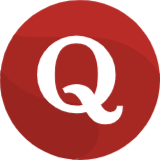To make great coffee at home, you need perfectly sized grounds. Because when it comes to coffee grounds, SIZE MATTERS!
In this guide, I will teach you how to determine coffee grind sizes and why it is important.
There are different preferred grind sizes for every brewing method; like French Press, Pour Over, or Espresso and if you are like me, who switch types of coffee drinks regularly, you might end up mixing the grind sizes.
Coffee Grind Size Chart for all coffee brewing methods
Hmm! You are not good at remembering things? Simply download this Coffee Grind Chart and keep it with you!
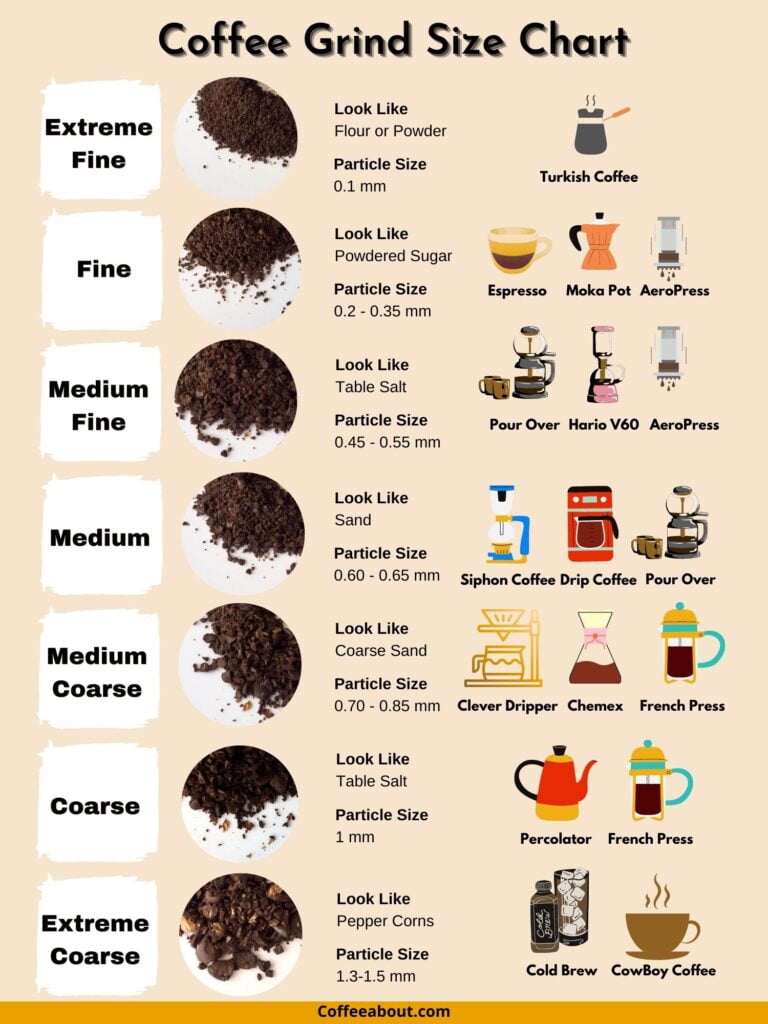
Here is a simple 3 point guide on finding the right coffee grind size for any brewing method:
Immersion brewing methods such as Cold brew and French press, involve steeping the coffee grounds in water for an extended period. To prevent over-extraction, a coarse grind size is used.
Pressurized brewing methods such as Espresso and Moka pot, involve the contact between coffee grounds and water for a very short time. To prevent under-extraction, a fine grind size is used.
Drip and pour-over brewing methods, which fall in the middle, allow hot water to extract the coffee flavor from the grounds for a few minutes. Therefore, medium grind settings are ideal for typical drip coffee.
Read a Guide on 14 Different Coffee Brewing Methods
Why does grind size matter, and how does it affect the taste of your coffee?
The grind size matters because even the freshest and highest-quality beans will not produce a good cup of coffee if the grind size is incorrect.
While, as mentioned earlier, grind size is subjective to the type of coffee drink. Nevertheless, you will generally get under-extracted flavors if you use too coarse grounds and over-extracted flavors if you use too fine grounds.
While the extraction of coffee flavors also depends on other factors such as steeping time, coffee-to-water ratio, and water temperature, the grind size of the coffee beans is the most important factor.
Under extracted coffee
Using too coarse grounds will result in an under-extracted coffee, leading to a brew that tastes overly acidic, sour, and diluted.
Note: This can also happen if you use too low a water temperature or give too little steeping time.
Over Extracted coffee
When the coffee grounds are too fine it will result in an over-extracted coffee, with an excessively bitter and sludgy taste.
Note: This can also happen if you use too hot water or steep for too long a time.
It’s important to aim for a balanced coffee extraction, so all of the tasting notes can come out, producing a sweet, well-rounded, and mildly acidic coffee drink.
7 common types of coffee grind sizes
There are seven common coffee grind sizes, ranging from extremely fine to extremely coarse, and I must say if you master them, you can brew every type of coffee drink at your home with perfection.
Now let’s dive into the details of 7 popular grind sizes, what they look like, and what grind size is best for what brewing method.
Extreme fine (Grind size for Turkish Coffee)
Extreme fine grounds look like flour or powder. These grounds are exclusively used for Turkish coffee; if you haven’t heard of Turkish coffee before, you probably not have seen these grounds.
There are no filters involved in the Turkish brewing method, and all the grounds either dissolve entirely into the drink or settle at the bottom.
That’s why extremely fine grounds are used so they can easily settle at the bottom and do not make your drink muddy.
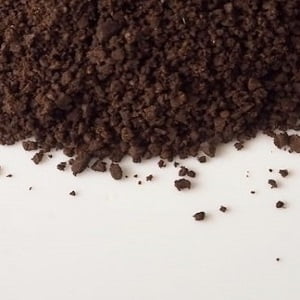
If you are a fan of Extra strong coffee drinks, then you must try Turkish coffee.
Fine (Grind Size for Espresso)
Fine grind is the most popular grind size since it is used in the most popular brewing methods, i.e. Espresso. That’s why it’s also known as Espresso grind.
The texture of fine grounds is like powdered sugar or a little finer than table salt.
Fine grounds are suitable for brewing processes that use pressurized water and short brewing time i-e, Espresso, Moka Pot, and Aero press

Medium fine (Grind Size for Drip Coffee maker)
A medium-fine grind is most suitable for brewing Siphon and Automatic Drip Coffee Makers
The texture of medium-fine grounds is compared to table salt and is a little finer than the sand.
Medium Fine grounds are for pour-over coffee lovers who want their coffee to be stronger and richer than normal. This grind size is perfect for cone-shaped brewers like Hario V60 and Kalita Wave and also for Moka Pot and Aeropress coffee makers.
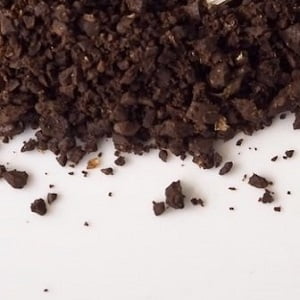
Medium (grind Size for Pour Over)
Medium grind size looks like fine sand and lies exactly between Extreme coarse and Extreme Fine.
Like Medium Fine grounds, Medium grounds are also perfect for Pour-over coffee and cone-shaped brewers like Hario V60, Kalita Wave, and AeroPress. It is also the most suitable grind size for Drip coffee machines.
For pour-over, you can use all three Medium Fine, Medium, and Medium-coarse grinds. It solely depends on your test. As you make the grind finer, your pour-over coffee will become more bitter and stronger. As you move towards the coarse settings, your drink will become smoother and more acidic.

Medium Coarse (Grind Size for Chemex)
Medium coarse grounds have an appearance similar to rough or coarse sand.
Medium Coarse can be used for French Press coffee if you want it stronger, but it can make your drink gritty.
This grind size is perfect for Chemex, Clever dripper coffee maker, and café solo brewer. The brewing style of these methods is similar to the French Press but with the addition of a filter.

Coarse (Grind Size for French Press)
Coarse Grind is also known as French Press Grind and has an appearance similar to sea salt.
Coarse Grind is well suited for French Press as it can easily be filtered out with the Metal strainer of the French Press coffee maker.
Coarse grounds are also used for Coffee cupping by Baristas. Cupping is the act of tasting, evaluating, and comparing coffees based on their flavor, quality, and potential.
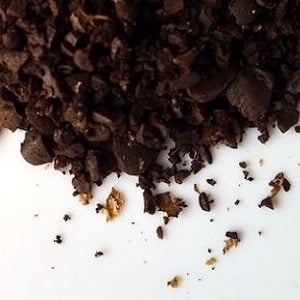
Extreme coarse (Grind Size for Cold Brew)
The texture of extreme coarse grounds is similar to peppercorns, and you can easily get them by adjusting the grind settings of your burr grinder to the maximum.
Extremely coarse grind size is ideal for brewing Cold brew coffee due to the long steeping time.
Cowboy coffee, a traditional brewing method, also uses extremely coarse grounds.
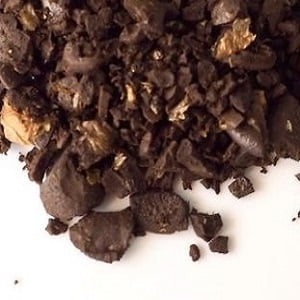
Why should You grind your own coffee beans?
The simple answer is “Maximum Freshness”. If you want quality coffee with full flavors, then you should grind your beans right before brewing.
According to coffee experts, freshly roasted beans maximize in flavor within two weeks of roasting, and after that, the flavors start degrading.
Since pre-ground coffee has a larger exposed area, it degrades more quickly than whole beans. Even when stored properly in an airtight container, pre-ground coffee loses flavor.
And the best thing is if you own a grinder, you can grind beans to any setting according to your taste. And you can also enjoy different brewing styles according to your mood.
In the end, it all comes down to Freshness. If you can not compromise on the taste and Freshness of your coffee, then it will not be fair to compromise on using pre-ground coffee beans.
There is a simple rule of thumb for coffee aficionados, grind within fifteen days of roasting and brew within fifteen minutes of grinding.
What type of coffee grinder is best?
Until now, I have discussed everything you want to know about coffee grind types. So, let’s now discuss what type of coffee grinder will be best to get those grind settings.
Blade vs burr Coffee grinder
There are two types of coffee grinders Blade and Burr. In blade coffee grinders, there are two blades at the bottom of the chamber that spin rapidly and grind anything that comes in contact with them. While a burr grinder has two burrs to crush the beans with consistency.
Blade grinders are present in almost every kitchen, and they work well for other purposes such as crushing spices, but they are total crap for grinding coffee beans because of 2 reasons.
- Heat is produced in blade grinders during the grinding process which speeds up the oxidation rate of coffee grounds, resulting in a loss of flavor.
- You can’t control the grind size while using blade grinders. The beans at the bottom of the blade grinder get hit by the blade continuously, becoming finer and finer, and those at the top get hit occasionally and remain coarse. There is no consistency you get grounds of all sizes, from fine to coarse, and sometimes there is also a whole bean present among the grounds.
Burr grinders are ideal for grinding coffee beans.
- Burrs are made of stainless steel material which precisely crushes the coffee beans. Due to the slow process, very little heat is produced, which is also a plus point.
- Another advantage of burr grinders is that you can adjust the space between the burrs so that you can get coffee grounds of the desired size.
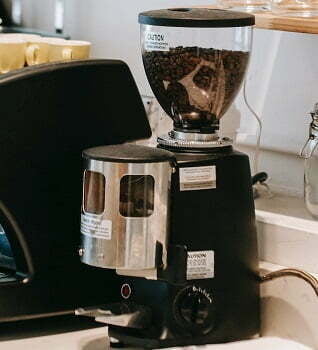
In the end, if you want balanced and flavorful coffee, you must invest in a quality burr grinder; it will cost a little more but is worth it.
Manual vs electric coffee grinder
Now that I’ve convinced you to buy a burr grinder, the next question is whether to get an electric or manual model.
Well! Both the manual and electric burr grinders work fine. It is just a matter of preference or convenience, how much budget you want to spend on a grinder, and whether or not you are willing to spend time and energy grinding coffee beans.
The design of manual burr grinders is very simple, and I must say they are more long-lasting than electric ones.
If you are a travel enthusiast and coffee is an essential part of your travel gear, then a manual device will be the best option for you.
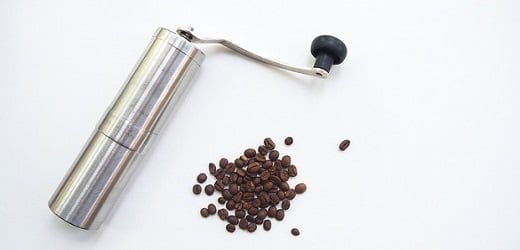
Also, manual grinders cost way less than electric ones. You can easily get a good manual model in a price range of 15 to 30 dollars. On the other hand, electric models are expensive, and you have to spend 70 to 100 dollars.
The downside of manual grinders is that you don’t have many options for the grind settings. Indeed, the grind settings of the seven famous grind sizes I mentioned above are available, but it’s fewer than electric models, which offer 30 to 40 grind settings.
Electric grinders are certainly better in terms of convenience. Electric Burr grinders are highly convenient and offer up to 40 grind settings. You just have to put the coffee beans in the hopper and adjust the grind settings, and your grounds will be ready in a few minutes.
Grind Settings for popular coffee grinders
To make your life easier, I have added the grind settings of the seven most popular grinders.
The grind settings for every grinder are different, that’s because every brand manufactures grinders according to their design.
If you have one of the following models, just copy the grind settings from this table and grind your beans to prepare a delicious and perfect cup of coffee.
| Coffee Drinks | Bratza Encore | OXO Brew Conical Burr | Eureka Mignon | Cuisinart Professional Mill | Krups Burr Grinder | Capresso infinity | Hario Skerton Pro Manual |
|---|---|---|---|---|---|---|---|
| Turkish | 1 – 3 | 1 | fine | 1 | 1 | 1 | 4 clicks |
| Espresso Shots | 4 – 9 | 1 – 3 | fine | 2 – 4 | 2 – 4 | 2 – 4 | 4 clicks |
| Aeropress | 4 – 23 | 1 – 8 | fine – medium | 2 – 10 | 2 – 10 | 2 – 9 | 4 – 9 clicks |
| Hario v60 | 11 – 16 | 4 – 6 | medium | 5 – 7 | 5 – 7 | 4 – 6 | 4 – 6 clicks |
| Moka pot | 4 – 16 | 1 – 6 | fine – medium | 2 – 7 | 2 – 7 | 2 – 6 | 4 – 6 clicks |
| Drip machine | 17 – 23 | 6 – 8 | medium | 8 – 10 | 7 – 10 | 7 – 9 | 7 – 9 clicks |
| Pour-over | 11 – 29 | 4 – 11 | medium | 5 – 13 | 5 – 12 | 4 – 12 | 4 – 12 clicks |
| Chemex | 24 – 29 | 9 – 11 | medium | 11 – 13 | 10 – 12 | 10 – 12 | 10 – 12 clicks |
| French press | 31 – 36 | 11 – 13 | coarse | 14 – 16 | 13 – 15 | 12 – 14 | 12 – 14 clicks |
| Cold-brew | 31 – 40 | 11 – 15 | coarse | 14 – 18 | 13 – 17 | 12 – 16 | 12 – 16 clicks |
| Cowboy Coffee | 37 – 40 | 14 – 15 | coarse | 17 – 18 | 16 – 17 | 15 – 16 | 15 – 16 clicks |
Here’s your task! Test each setting over the next couple of weeks and select the one that suits your taste the best. Remember! The finer grind size will make an over-extracted, bitter, and intense coffee drink, and the coarser grind size will make an under-extracted, acidic, and lighter coffee drink. And you have to find the sweet spot
Faqs
How long can you store ground coffee?
It’s always a best practice to grind beans just before brewing coffee. The oxidation process starts as soon as you grind the beans. If you want the full flavors in your coffee drink, try to brew in ten to twenty minutes of grinding.
It’s not like your coffee grounds will become completely useless after twenty minutes. In fact, if you are not very taste-conscious, you will not notice any difference even after a day or two. But if you are too serious about the freshness of a cup of joe, then try to consume grounds as early as you grind them.
Can I ask my roasters to grind the coffee beans?
Yeah, you can ask your roaster to grind coffee beans for you. But the grounds will surely degrade in flavor as you have to store them for a while because you can’t go to the roaster whenever you want to brew coffee.
But you can take other measures that can help preserve the flavors to some extent, like storing grounds in an airtight container, storing them in a dark and dry place, and trying to finish them as soon as possible.
Can you grind your coffee beans in a blender?
No, you should never grind the beans in a blender. Blender works just like blade grinders; and make a very inconsistent grind size that is not suitable for brewing any coffee drink.
I think buying pre-ground coffee is better than grinding coffee beans in a blender or blade grinder.
You will get inconsistent grounds if you use a blender and inconsistent grounds result in an unbalanced and flavorless coffee drink.
Does the finer grind make stronger coffee?
Yeah, using finer grounds will make coffee stronger, but bitter flavors also dominate while using finer grounds. And an overly bitter coffee drink is certainly not desirable.
The grind size is not the only factor that makes the coffee stronger; many other factors affect the intensity of flavors, like the type of roast, region of beans, brewing style, and steeping time.
Stick to our coffee grind size guide, and you will never face a problem with the size of the grounds.
Do you Need to Grind Coffee Beans Fresh Every Time?
Ideally yes! You have to grind beans every time just before brewing a cup of coffee.
But if you are not too serious about the freshness, you can store the grounds in an airtight container and place them in a dry and dark place.
what setting to grind coffee for Keurig?
For a Keurig, it’s best to use a medium grind setting, similar to table salt. This consistency allows for a balanced extraction and prevents clogging in the machine, ensuring a flavorful cup of coffee.
how fine to grind coffee for Nespresso?
Nespresso machines use high-pressure extraction like traditional espresso makers, you’ll need a fine coffee grind size with the consistency of sugar or flour. This fine grind ensures optimal extraction and a rich, flavorful espresso.
Other Interesting articles:





